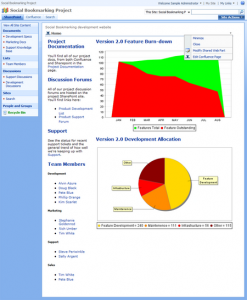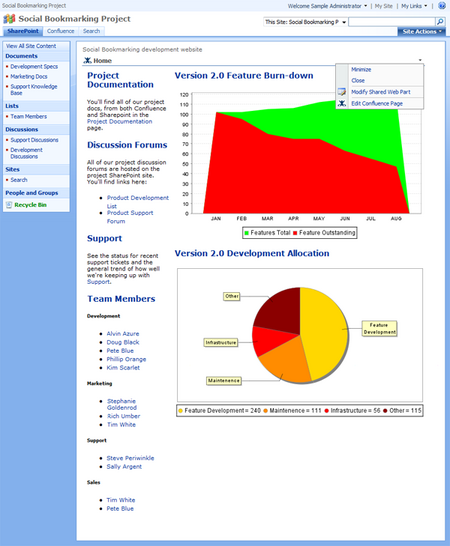You read it here first: Zoho must be planning to take over the entertainment business. Need proof? Just watch the promo video for Zoho Creator Mobile version. Gone are the screenshots, canned demos… it’s all Life 2.0 
Hm… I hope his sweethearts’s phone number is not real … otherwise he’s got competition for that movie.
On a more serious note: Zoho is mostly known for their Office Suite and are often compared to Google and Microsoft, when talking about documents, spreadsheets and presentations. Database management and application generation are  often overlooked, probably since Google does not have anything to offer in these areas. But Zoho does, and in fact that’s the application that attracts the largest active user base. Creator allows non-tech-types (like yours truly) to easily create fairly sophisticated applications, which are often shared by dozens or hundreds of users. There are about 60K (!)applications developed in Creator, used by over half a million people. (Side note: there must be a fair amount of redundancy among 60 thousand applicationss, and while you can share them publicly today, I’d like to see Zoho develop the search / categorization tools to easily locate them; a sort of “marketplace” even if there’s no actual money flow.)
often overlooked, probably since Google does not have anything to offer in these areas. But Zoho does, and in fact that’s the application that attracts the largest active user base. Creator allows non-tech-types (like yours truly) to easily create fairly sophisticated applications, which are often shared by dozens or hundreds of users. There are about 60K (!)applications developed in Creator, used by over half a million people. (Side note: there must be a fair amount of redundancy among 60 thousand applicationss, and while you can share them publicly today, I’d like to see Zoho develop the search / categorization tools to easily locate them; a sort of “marketplace” even if there’s no actual money flow.)
We can’t really talk about Creator without mentioning a related product: Zoho DB. While Creator is an application generator, DB is primarily for data manipulation, analysis and reporting. Zoho CEO Sridhar Vembu explains the differences here.
Computerworld recently listed Zoho Creator amongst the Five free Web apps we can’t live without. There is also a blog started started by users, entirely dedicated to Zoho Creator, with special focus on using it as a small business software platform: Land of Zoho Creator.
(Disclaimer: I’m an Advisor to Zoho.)

 They’ve been
They’ve been  ). Today, in the age of better online collaboration (that you can NOT manage on paper) and ergonomic large screens,
). Today, in the age of better online collaboration (that you can NOT manage on paper) and ergonomic large screens, 




 )
)


Recent Comments